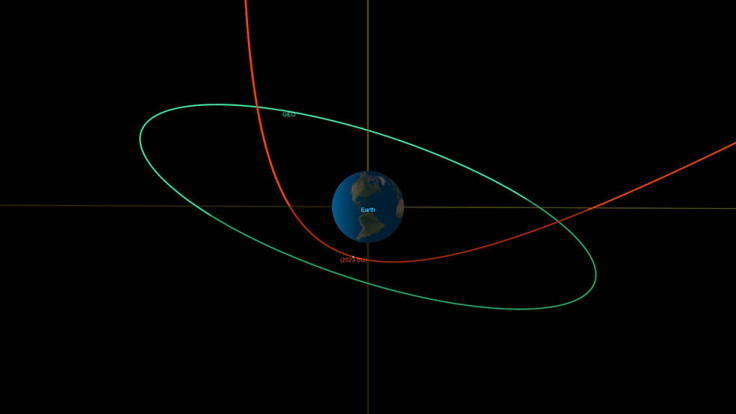Asteroid The Size Of A Truck Will Skim Earth On Thursday, 10x Closer Than Satellites

KEY POINTS
- The asteroid has no risk of hitting Earth, NASA explained
- If it does hit Earth, it will quickly disintegrate in the atmosphere before it hits the ground
- The asteroid will be ten times closer than most satellites in space
An asteroid the size of a box truck will expectedly skim the Earth on Thursday night, the National Aeronautics and Space Administration (NASA) reported.
According to the agency, the asteroid named Asteroid 2023 BU is one of the closest recorded Near-Earth Objects (NEO) that has approached the Earth, ever. The asteroid, however, has no risk of hitting Earth.
"On Thursday, Jan. 26, a small near-Earth asteroid will have a very close encounter with our planet," NASA reported.
The asteroid will reportedly pass by 2,200 miles above the southern tip of South America – ten times closer than communication satellites – at about 4:27 p.m. PST (7:27 p.m. EST) only 2,200 miles (3,600 kilometers) above the planet's surface.
"There is no risk of the asteroid impacting Earth. But even if it did, this small asteroid – estimated to be 11.5 to 28 feet (3.5 to 8.5 meters) across – would turn into a fireball and largely disintegrate harmlessly in the atmosphere, with some of the bigger debris potentially falling as small meteorites," NASA added.
Astronomer Gennadiy Borisov reportedly discovered the asteroid from his observatory in Nauchnyi, Crimea, on Saturday, as per NASA.
After the discovery, additional observations were reported to the Minor Planet Center (MPC) – the internationally recognized clearinghouse for the position measurements of small celestial bodies – who announced the discovery only after sufficient observations were collected.
"Within three days, a number of observatories around the world had made dozens of observations, helping astronomers better refine 2023 BU's orbit," NASA added.
Meanwhile, the agency's Scout impact hazard assessment system, maintained by the Center for Near Earth Object Studies at NASA's Jet Propulsion Laboratory in Southern California, almost immediately predicted the asteroid's near-miss orbit.
"Scout quickly ruled out 2023 BU as an impactor, but despite the very few observations, it was nonetheless able to predict that the asteroid would make an extraordinarily close approach with Earth," Davide Farnocchia, a navigation engineer at JPL who developed Scout, said.
"In fact, this is one of the closest approaches by a known near-Earth object ever recorded."
For this month alone, NASA expects eight more NEO close approaches to Earth, 16 more in February and ten more in March.

© Copyright IBTimes 2024. All rights reserved.











